The Super Mario RPG remake is absolutely faithful to the original Mario JRPG in every way, except the ways that are better left in the '90s
Hands-on | This remake might just make the SNES classic obsolete
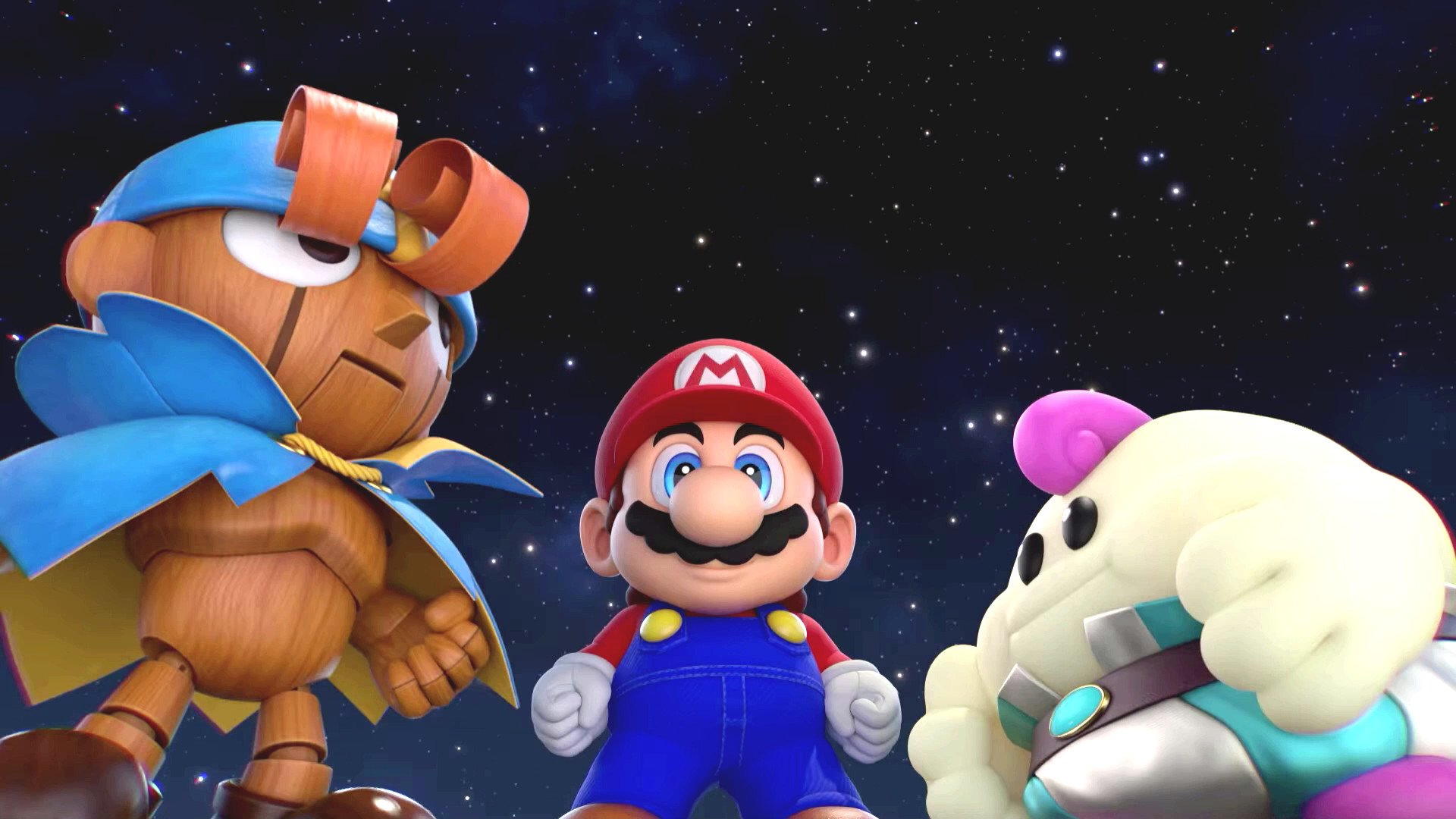
You probably don't need me to tell you that Super Mario RPG is good. It's one of the best SNES games ever made, and while it never got the direct sequel it deserved, it did lay the foundations for series like Paper Mario and Mario & Luigi to continue offering colorfully charming takes on the RPG formula in the Mushroom Kingdom for decades to come. That's why, after an early look at the upcoming Switch remake, I don't really want to talk about the game in general terms - I want to show you just how well it compares against that original classic.
There are points where I've simply been astounded by just how faithful the new Super Mario RPG remake is to the original 1996 JRPG. The dialog, the level design, and the minigames are all virtually identical, to the point where it often feels like the Switch remake could simply be a lavish skin laid over the Super NES classic. But after spending a few hours comparing both versions of Super Mario RPG, it's clear that the remake is a lovingly crafted adaptation that offers so many wonderful quality-of-life improvements that it's tough to ever imagine going back.
The most immediately impressive thing about the remake is, of course, the new visual treatment. In general, SNES-era graphics have aged better than pretty much any other retro look, but even I have to admit that's not really true for Super Mario RPG. The original's style of pre-rendered CGI sprites looked just fine on '90s CRT televisions, but - as with Donkey Kong Country - looks more like a collection of over-compressed .jpeg files when blown up on modern, high-resolution screens.
The remake does a genuinely fantastic job of expanding the visual style of the original into something far more robust and detailed. Take a look at the difference between the old and new versions of the castle interior. The remake now has all these subtle reflection effects that add tons of detail to the scene without dramatically changing the mood or feel of the original.
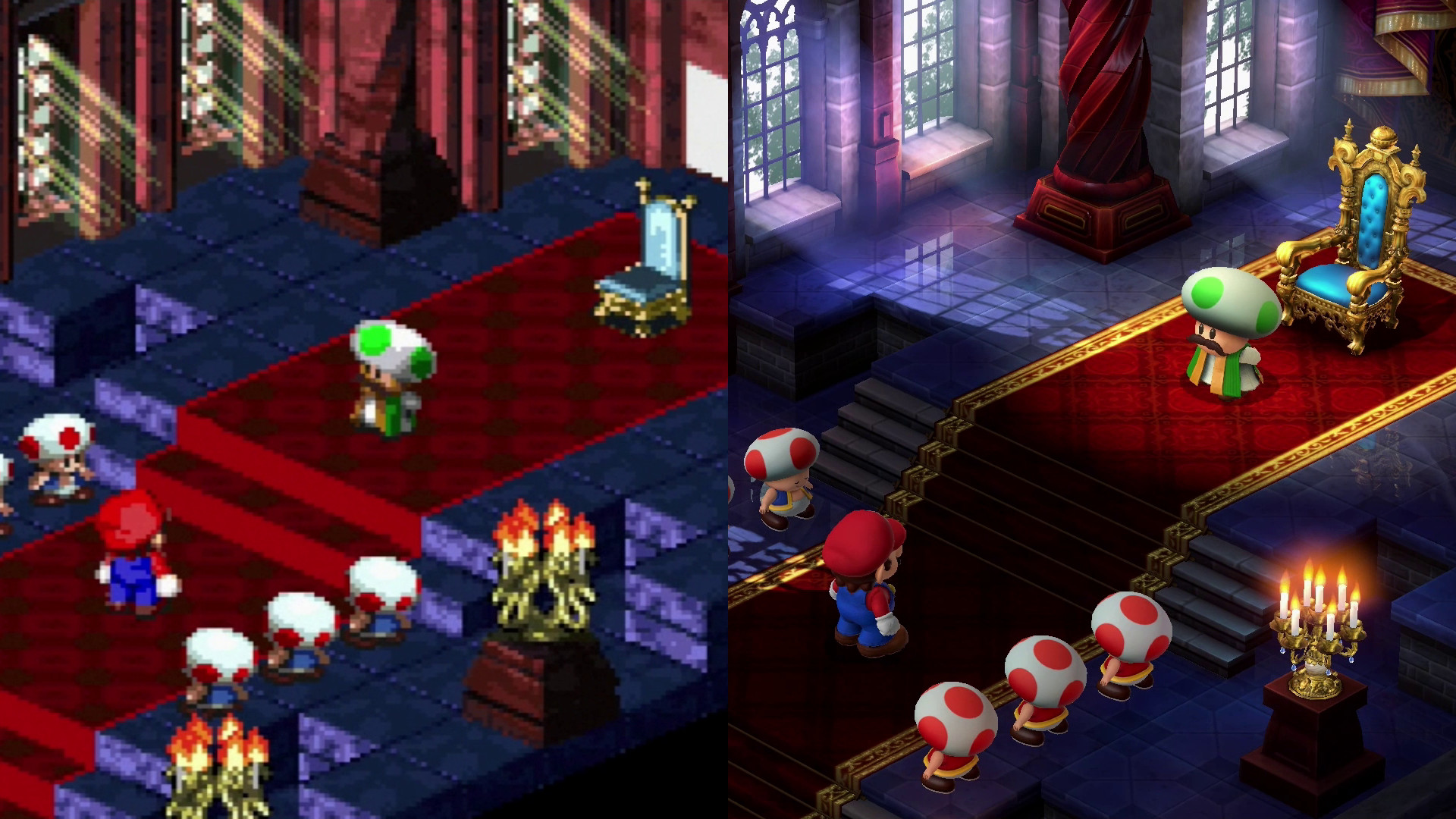
I'm particularly taken by the adorable new character models, which generally show far more personality than the original sprites. That can occasionally be a bit awkward - the pantomime acting you see in certain story sequences looks just plain weird on a character model capable of properly emoting - but for the most part everything feels like it carries the personality of the characters forward in an endearing way. The little dance Mario does on the level-up screen now might just be the cutest thing I've ever seen in a video game.

A handful of gorgeously rendered new cutscenes offer more cinematic presentations of story sequences that originally played out between sprites, but beyond those the story is rendered almost exactly as it was in the original. I was especially surprised to see that the script is effectively identical to the old English translation. I'd expected to see a brand-new translation of the original Japanese here, but basically all the tiny little in-jokes and pop culture references are still intact. The only notable differences are in character names - 'Toadstool' is now 'Peach,' in keeping with the Princess's modern nomenclature, and the somewhat dated 'Frogfucius' name has been changed to a more generic 'Frog Sage.'
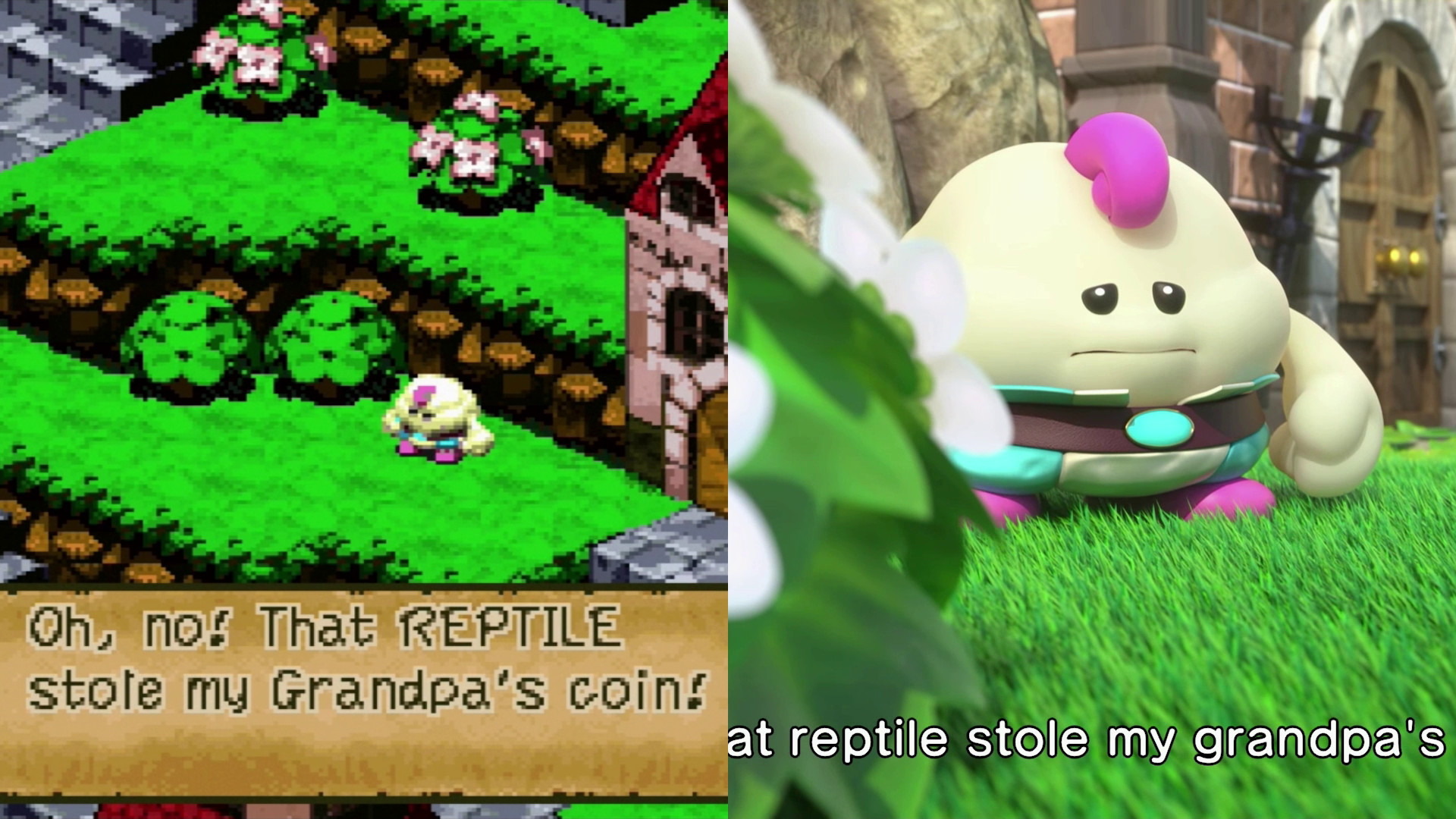
Against every expectation I had, the game even retains the infamous little Easter egg where you can make Mario rifle through Peach's bedroom in order to find some sort of unmentionable item, labeled only as '???'. Super Mario RPG is deeply weird even by the standards of Mario role-playing games, and the remake loses none of those bizarre vibes.
Weekly digests, tales from the communities you love, and more

Every screen in the remake is effectively identical to the original, right down to enemy and item placement. The only adjustments you'll see are those to account for some of the new quality-of-life features, like where a jump pad that once served as a shortcut to the exit of an area has been removed since you can now simply fast travel between locations at any time.
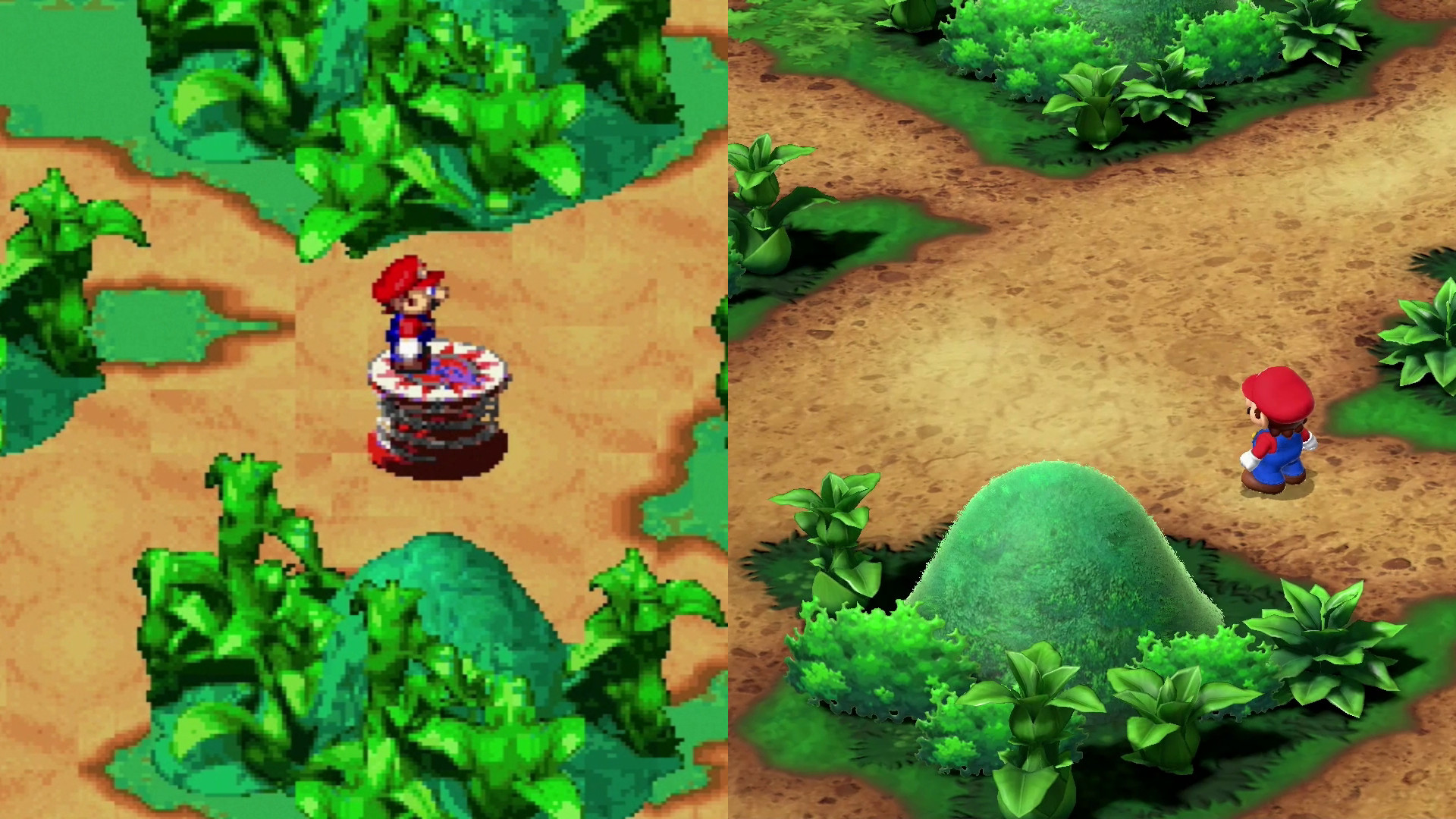
The menus have been completely revamped in the remake, making it far easier to get to whatever you need to see with just a couple of button presses. In that vein, perhaps the biggest low-key improvement is the new inventory system. The original game had an extremely limited inventory where each individual item took up its own slot. Now the remake offers a much more merciful system where you're able to hold as many item types as you want, but each type has a limit on how many of that item you can stack.

There are also some fantastic tweaks to the numerous minigames. They all still basically play as they did in the original, just with some little adjustments to make them less frustrating. The rhythm-based Yoshi racing game, for example, now shows a visual indicator of how to time your button presses on top of the audio cues.
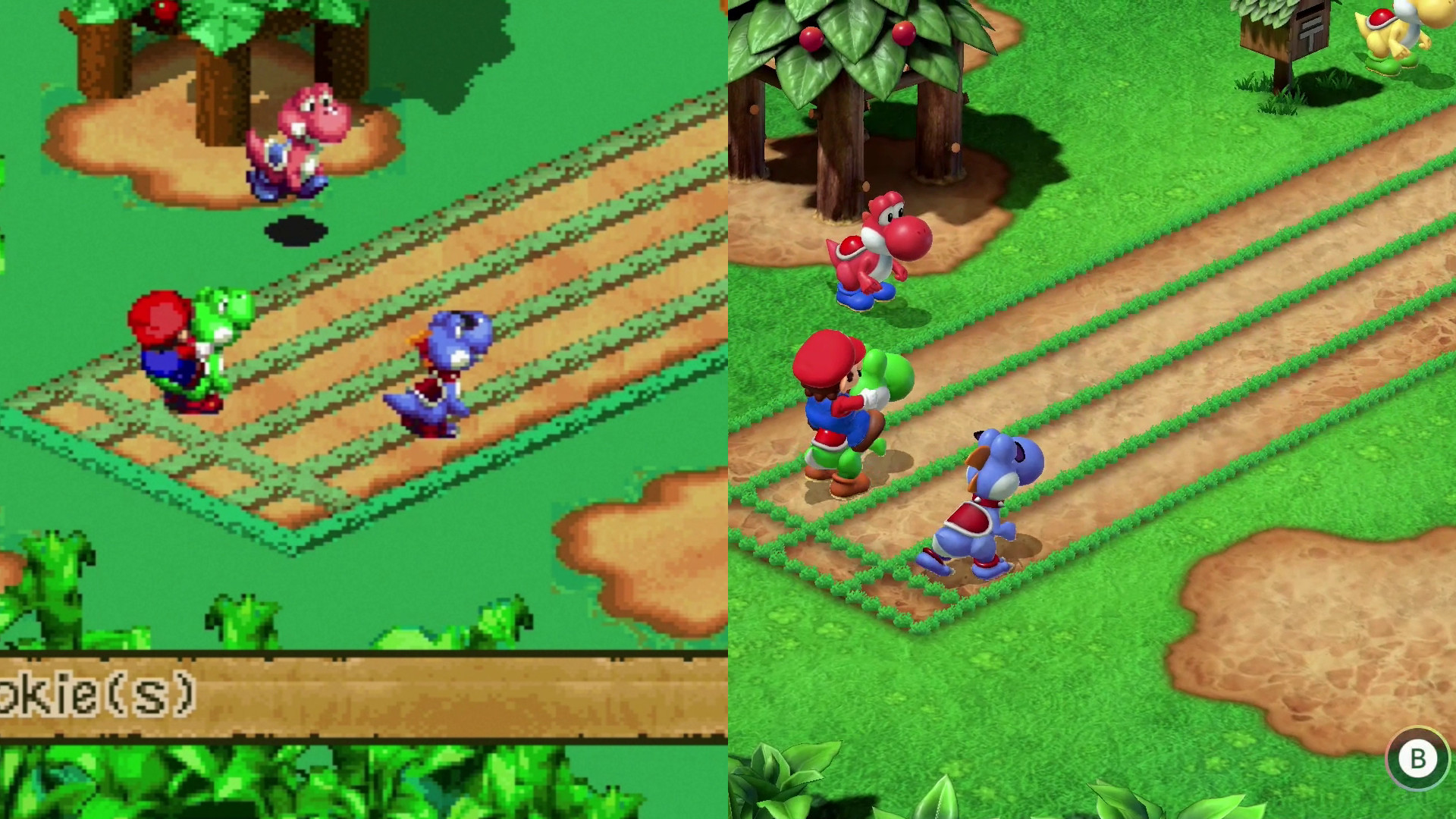
Combat is really the only aspect of the game that's seen changes beyond simple quality-of-life tweaks. All your attacks still do bonus damage if you press a button at the correct moment, but now you get much clearer indicators of when to time your button presses. It feels like the timing windows are slightly tighter to compensate for those clearer indicators, but I can't be certain if that's just my imagination. Either way, you now build up a chain when you successfully execute those timed bonuses that gradually builds to give subtle buffs to your party. At the same time, the actions also contribute to a meter you can spend to execute a multi-character ultimate attack.
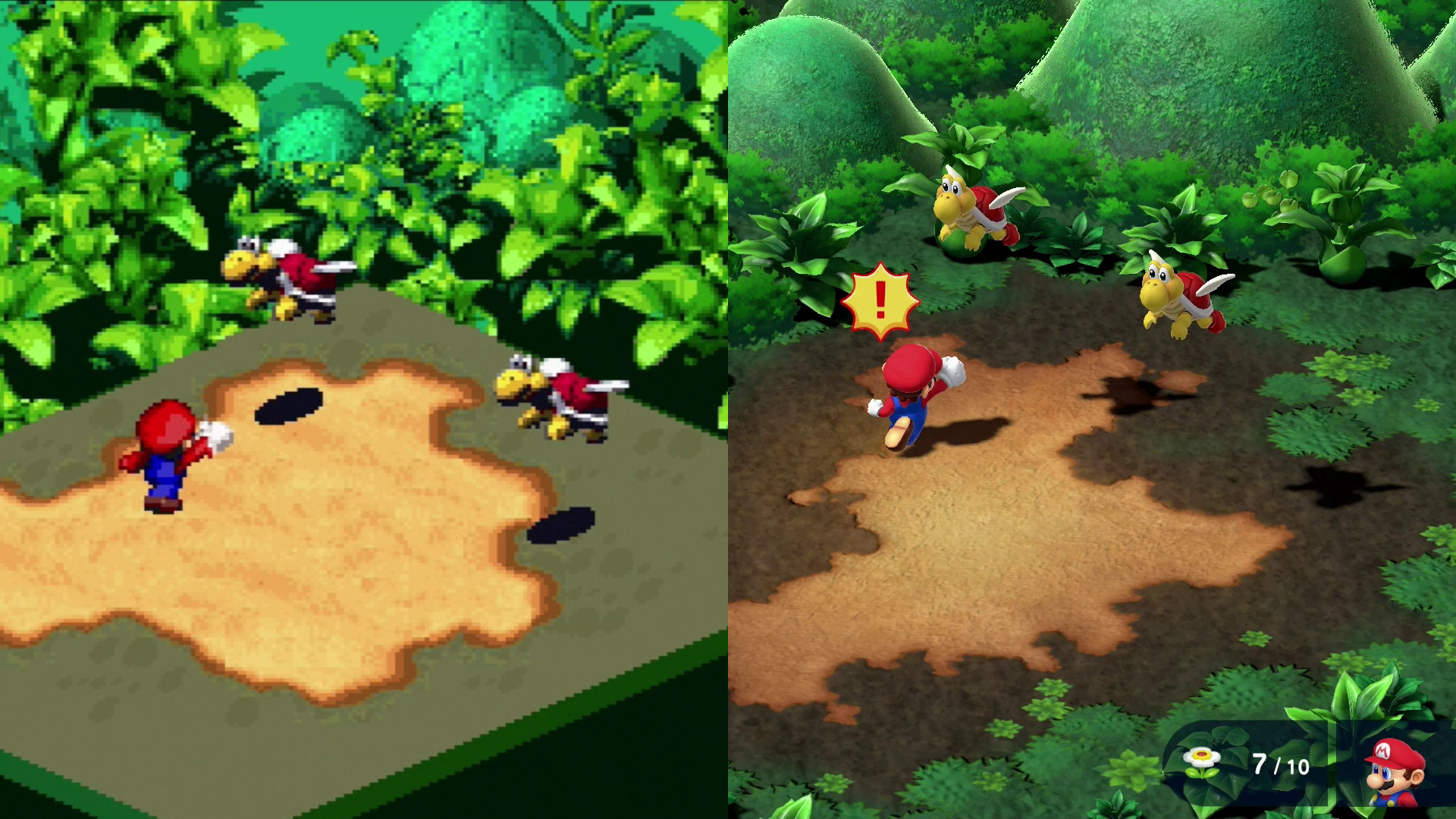
None of these changes fundamentally alter the flow or feel of combat, but they do give you a lot more to think about when you're fighting. I have no idea how these systems will work in the more challenging late-game encounters, but they make running through the otherwise repetitive early fights a lot more engaging, since just one missed attack bonus will reset your chain and force you to slowly build up again to stay at maximum effectiveness.
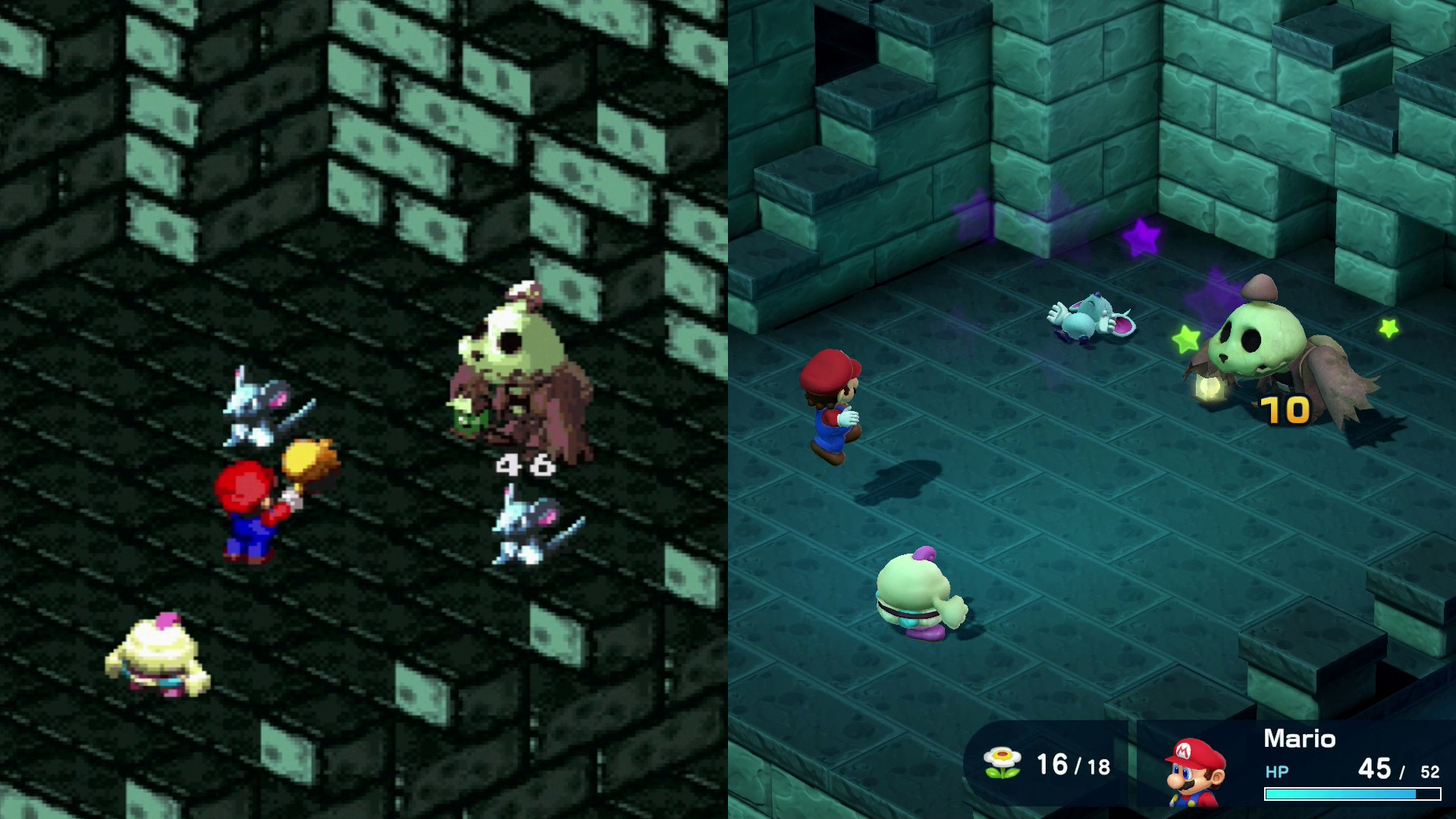
You'll also occasionally encounter specially labeled enemies with massively increased HP counts that effectively serve as minibosses to help spice up random encounters. You can get Frog Coins - a special currency used to buy powerful items - for defeating them, which makes the currency far easier to farm in the remake.

Super Mario RPG is shaping up to be a fascinating remake. It does far more than simply offer a modernized visual retouch, but it makes its changes without any dramatic changes to the flow and spirit of the original game. It's absolutely faithful to the spirit of the original, but the developers have recognized the limitations and frustrations of the old game and made some smart adjustments to level out those issues without compromising what made it all great in the first place. I can't wait to see how the rest of the game plays out with all these changes in place.
The ranks of the best JRPGs of all time include quite a few '90s classics.

Dustin Bailey joined the GamesRadar team as a Staff Writer in May 2022, and is currently based in Missouri. He's been covering games (with occasional dalliances in the worlds of anime and pro wrestling) since 2015, first as a freelancer, then as a news writer at PCGamesN for nearly five years. His love for games was sparked somewhere between Metal Gear Solid 2 and Knights of the Old Republic, and these days you can usually find him splitting his entertainment time between retro gaming, the latest big action-adventure title, or a long haul in American Truck Simulator.


